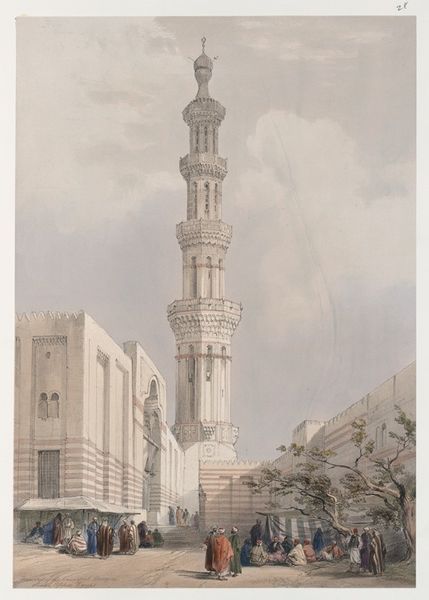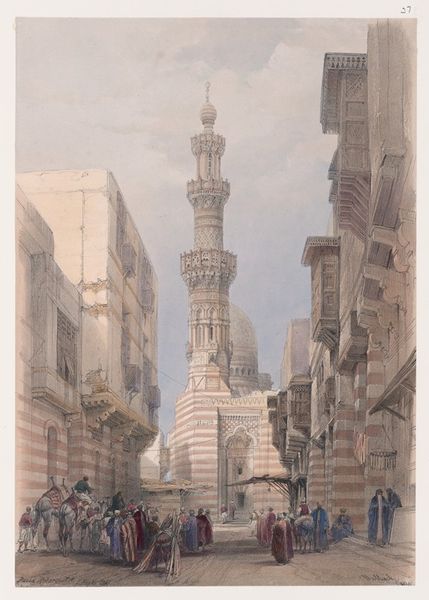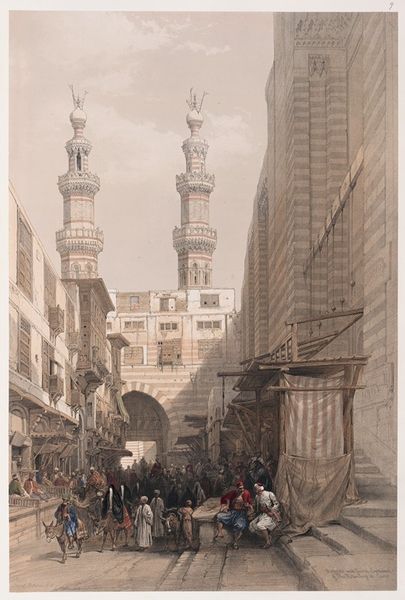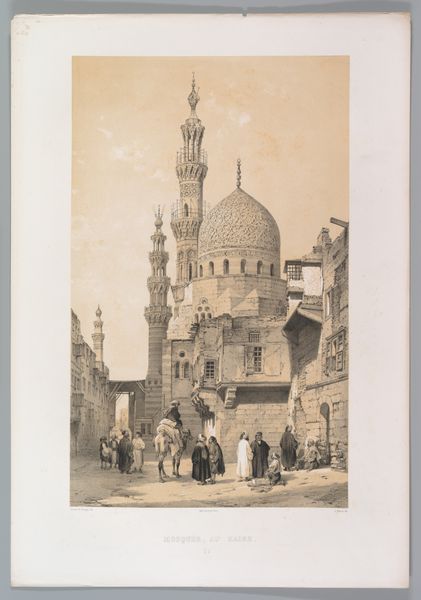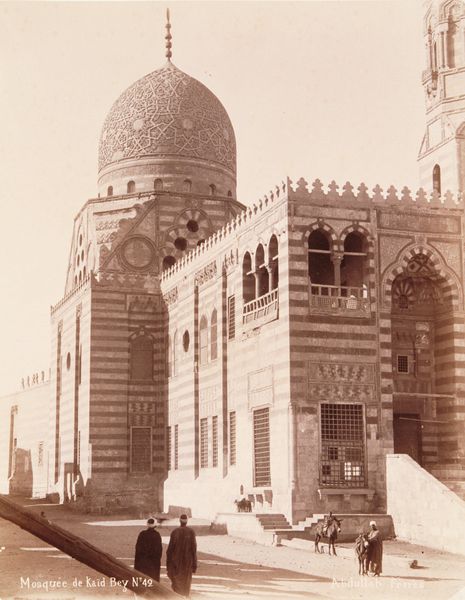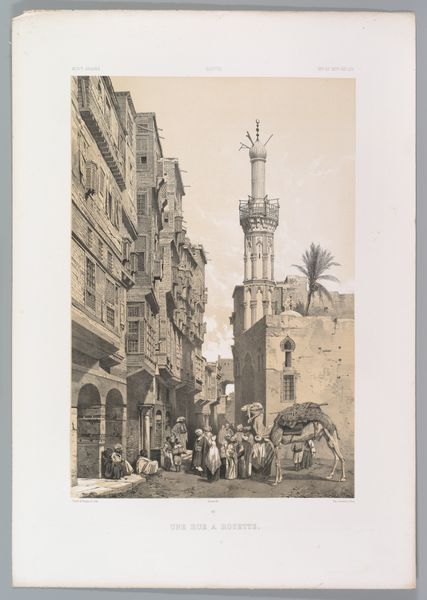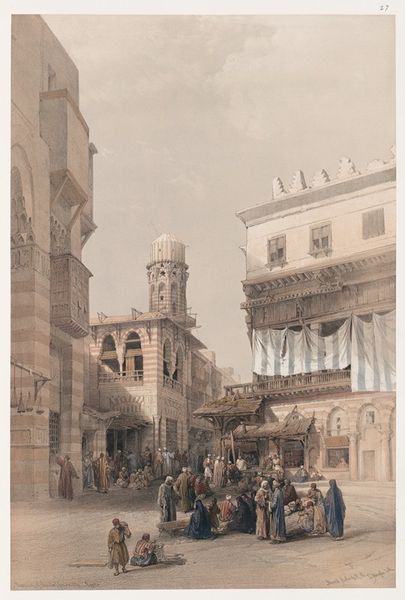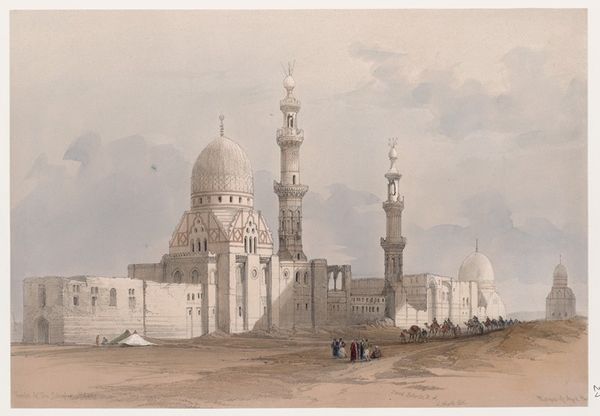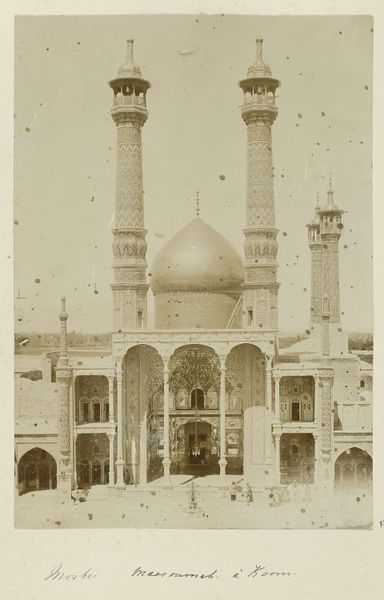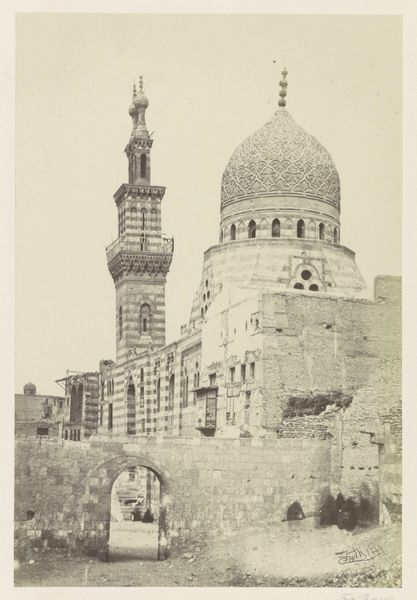![Tombs of the Khalifs [Caliphs], Cairo. by David Roberts](/_next/image?url=https%3A%2F%2Fd2w8kbdekdi1gv.cloudfront.net%2FeyJidWNrZXQiOiAiYXJ0ZXJhLWltYWdlcy1idWNrZXQiLCAia2V5IjogImFydHdvcmtzLzA3YzI3NzBjLTg2NzctNDc5OC1iZTA3LThiMWUxMWJlMTZjOC8wN2MyNzcwYy04Njc3LTQ3OTgtYmUwNy04YjFlMTFiZTE2YzhfZnVsbC5qcGciLCAiZWRpdHMiOiB7InJlc2l6ZSI6IHsid2lkdGgiOiAxOTIwLCAiaGVpZ2h0IjogMTkyMCwgImZpdCI6ICJpbnNpZGUifX19&w=1080&q=75)
painting, watercolor
#
painting
#
landscape
#
perspective
#
outdoor photography
#
watercolor
#
orientalism
#
holiday photography
#
cityscape
#
islamic-art
Copyright: Public Domain: Artvee
Curator: David Roberts' watercolor, "Tombs of the Khalifs [Caliphs], Cairo," created between 1846 and 1849, offers a detailed glimpse into 19th-century Egypt. Editor: It's captivating! There’s an almost ethereal quality to it, maybe because of the light watercolor wash, or the imposing yet intricate architecture. The composition seems to pull you into the scene. Curator: Roberts was quite fascinated by the Orient, and this work certainly reflects that prevailing interest in the exotic. Consider how the application of watercolor—often associated with quick studies— served in representing such complex architectural spaces. Editor: It raises interesting questions about the accessibility of such grand structures at the time, though. Watercolor paintings like this one were relatively easy to reproduce and disseminate across Europe and colonial networks, shaping perception of "the Orient". How do we view Roberts' rendering as a form of documentation, and how much is influenced by orientalist perspectives? Curator: Absolutely, the socio-political context cannot be ignored. Roberts benefited greatly from wealthy patrons who sponsored such voyages and promoted these picturesque, often romanticized, representations. Also, the very act of sketching and painting these sites had implications on property and power dynamics within the colonial context. Editor: I see. There’s an implicit commentary, too, on the cultural value assigned to artistic representation versus the intrinsic worth and use of the site. Was Roberts and the other artists’ equipment and materials supplied locally, imported from afar, or what level of local artistry went into such artworks, too? The production aspect of Orientalist works are seldom talked about, though their importance remains high when examining power relations. Curator: Exactly. This painting can be regarded not simply as art, but as cultural artifact produced by complex social forces. Editor: That gives me a new way of understanding not just this piece, but also the consumption of these images then and now. Curator: Yes, contextualizing the work within social dynamics gives us far more interesting interpretations!
Comments
No comments
Be the first to comment and join the conversation on the ultimate creative platform.
